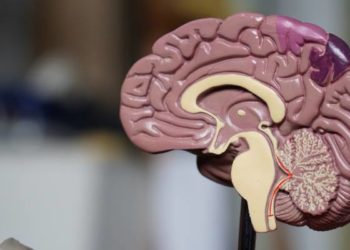Medical therapy beneficial over stent placement for intracranial arterial stenosis
1. When compared to medical therapy, the placement of a balloon-expandable stent was associated with both an increased 1-year risk of stroke or transient ischemic attack (TIA) in the same brain region correlating to the area of intracranial arterial stenosis as well as an increased 30-day risk of stroke or TIA in any brain region.
2. Study enrolment in this trial was terminated early due to this discrepancy in stroke rates between the two groups.
Evidence Rating Level: 1 (Excellent)
Study Rundown: This study examined the results of medical therapy versus balloon stent placement in the treatment of a common cause of stroke, intracranial arterial stenosis. The results of this study, which show a greater benefit in stroke reduction with medical therapy over stenting, are in accord with those previously demonstrated in the Stenting and Aggressive Medical Management for Preventing Recurrent Ischemic Stroke (SAMMPRIS) trial, which had a similar endpoint. Both this current study and the SAMMPRIS trial were terminated early due to the high rates of stroke in the stenting group compared to the medical therapy group.
Strengths of this study include its randomized controlled design and the fact that it was the first multicenter, randomized controlled trial that examines the role of balloon-expandable stents as a therapeutic option for this population. Although the trial was not double-blinded, these results further support those results of the SAMMPRIS trial and further encourage clinicians to avoid stenting for symptomatic intracranial arterial stenosis at this time. Future studies may be able to identify subgroups of this population for which stenting is a more beneficial option.
Click to read the study, published today in JAMA
Click to read an accompanying editorial in JAMA
Relevant Reading: Stenting versus Aggressive Medical Therapy for Intracranial Arterial Stenosis
In-Depth [randomized controlled trial]: This study included patients from 27 study sites between the ages of 18 to 85 years with symptomatic intracranial arterial stenosis, defined as having either a transient ischemic attack (TIA) or stroke linked to the brain region associated with the stenosis in the past 30 days. A total of 112 patients were randomized in a 1:1 ratio to either medical therapy alone (clopidogrel 75 mg daily for 3 months, aspirin 81-325 mg daily for the study duration, statin to lower low density lipoprotein to less than 100mg/dL, and blood pressure medications to lower systolic blood pressure to less than 140 mm Hg or less) or medical therapy plus balloon-expandable stent placement. The study was terminated early, as an early outcome analysis suggested futility. Approximately 15.1% (95%CI 6.7-27.6%) of patients in the medical group and 36.2% (95%CI 24.0-49.9%) of patients in the stent group had a stroke or TIA within 1 year in the brain territory linked to the area of intracranial arterial stenosis (p = 0.02). About 9.4% (95%CI 3.1-20.7%) of patients in the medical group and 24.1% (95%CI 13.9-37.2%) of patients in the stent group had a stroke or TIA in any brain territory within 30 days (p = 0.05).
Image: PD
©2015 2 Minute Medicine, Inc. All rights reserved. No works may be reproduced without expressed written consent from 2 Minute Medicine, Inc. Inquire about licensing here. No article should be construed as medical advice and is not intended as such by the authors or by 2 Minute Medicine, Inc.





![Active smoking cessation intervention may provide tangible results [Project CLIQ]](https://www.2minutemedicine.com/wp-content/uploads/2014/12/smoking-e1418644951268-75x75.jpg)

![Eliminating nighttime feeding decreases cardiac decline in fruit flies [PreClinical]](https://www.2minutemedicine.com/wp-content/uploads/2015/03/Fruit_fly5-75x75.jpg)

